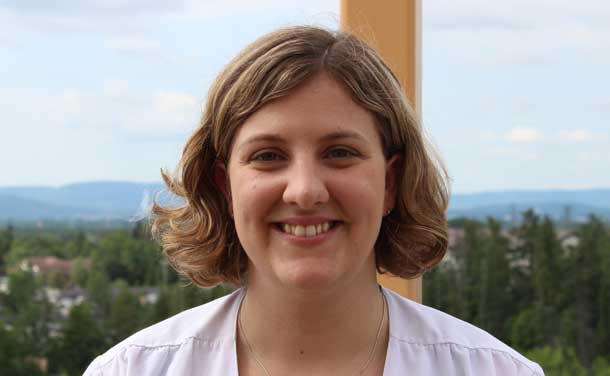

Smoking Tobacco – Leading Cause of Preventable Death
THUNDER BAY – Healthbeat – Thunder Bay Regional Health Sciences Centre (TBRHSC) has partnered with Dr. Patricia Smith of the Northern Ontario School of Medicine to offer inpatients an evidence-based quit smoking program.
“A hospital stay is a window of opportunity to quit smoking,” says Dr. Smith. “Decades of research have shown that receiving a quit smoking program during a hospitalization, along with continued post-discharge support, increases the likelihood of successfully quitting.”
[sws_pullquote_right]“A hospital stay is a window of opportunity to quit smoking,” says Dr. Smith [/sws_pullquote_right] Eligible inpatients, who indicate upon admission that they have smoked within the past 30 days, can expect a visit from the Inpatient Tobacco Cessation Nurse, Veronica Proper. If the patient is interested in quitting, she explains the program and works with the patient to develop a personalized quit plan.
The plan involves developing strategies for “trigger” situations and provides participants with self-regulation skills that are transferable to other parts of life.
“No two plans are exactly alike because each person’s reasons for smoking are different,” says Proper.
She then follows up by telephone two days after the patient’s discharge, every week for the first month, every other week in the second month and at three, six and twelve months. These calls help keep patients on track with their quit goals and provide the opportunity to discuss and adjust their personalized program if necessary.
The program is being conducted as a research study, led by Dr. Smith, to implement the quit smoking intervention in Northwestern Ontario. The project is funded for two years by the Ministry of Health and Long-term Care as a Provincial Demonstration Project with matched funding from TBRHSC.
“Smoking cessation is, without a doubt, the most effective preventive treatment for many types of chronic disease,” says Dr. Mark Henderson, Executive Vice-President, Patient Services and Regional Vice-President, Cancer Care Ontario.
“As an Academic Health Sciences Centre, we are proud to be participating in research that will eventually help reduce tobacco-related diseases in Northwestern Ontario and beyond, but it is also very exciting to see patients experience the immediate benefits of being offered this service.”
Proper says reaction has been very positive so far, even among those who are not ready to quit. “Patients thank me for coming to their bedside and offering them help. The ones who sign up are excited I’m following up. They say, ‘Really? You’re going to call me?’ I’ve had some patients say, ‘I’ve been waiting for you to call. I’ve been wrestling with the urge to smoke,’” says Proper. Some have referred to her to as their “angel” or “lifeline.”
Others can’t wait to share their successes with Proper. “They tell me, ‘I fought and I won,’” she says. “They feel the success and that momentum builds. I can feel the excitement through the phone.”
Many patients are also pleased to be participating in the research component, says Proper. “Not only are they helping themselves, but they’re also helping other people to quit down the road.”
Because smoking affects every part of the body, quitting can lead to significant health benefits, including better surgical outcomes, fewer complications, and decreased risk of readmission.
“The coolest part is empowering patients to make change in their lives to be healthier. Although it’s sometimes difficult to measure the benefits of health promotion programs, it’s clear that this intervention is life-saving. That gets me excited. I wake up in the morning and know I’m going to save lives.”













